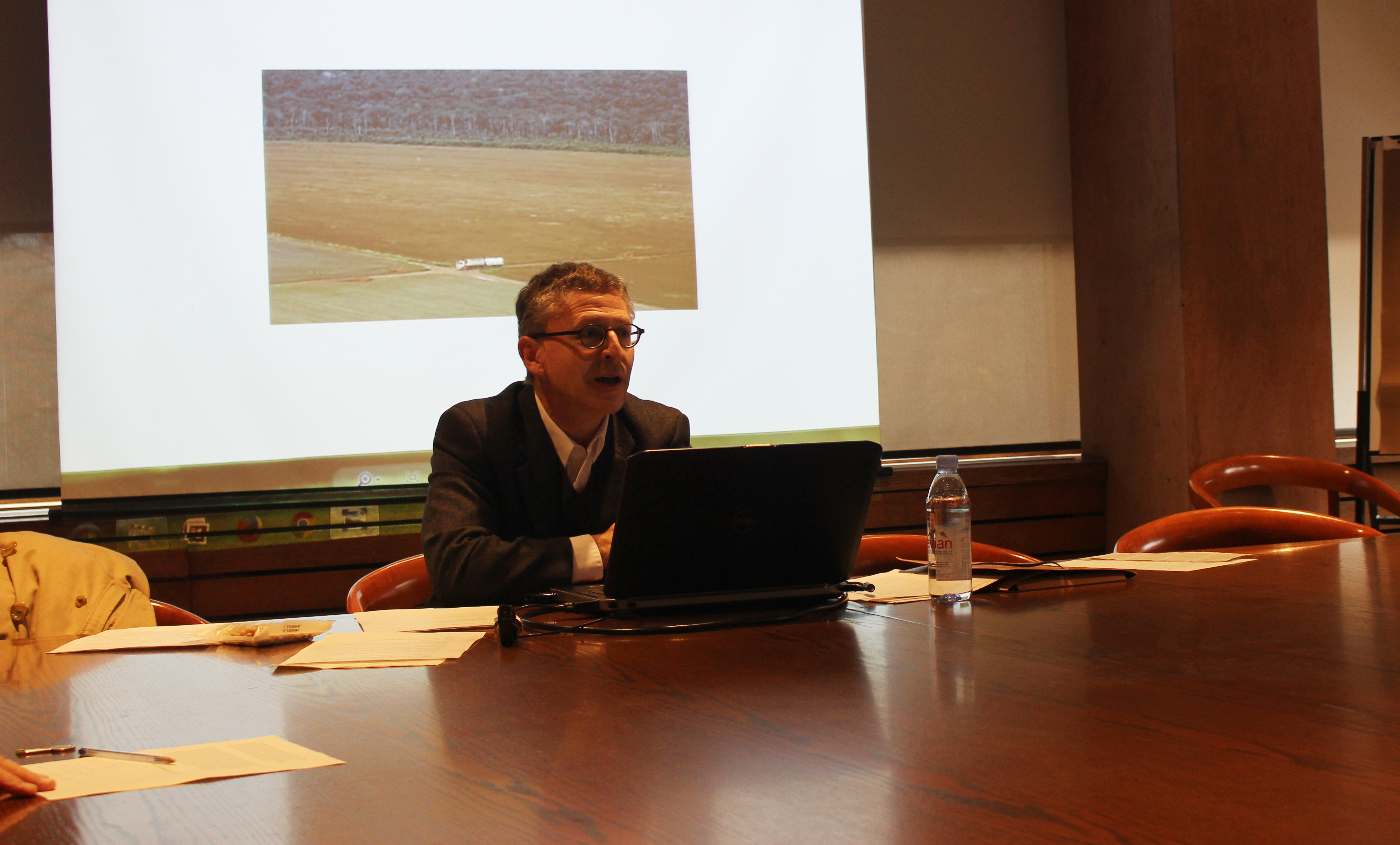Dr. Wolff begins his talk with a literary reference to the Chinese story of the “quatrain of seven steps”. During the Era of the Three Kingdoms, Cao Zhi created a poem within seven steps regarding brotherhood while using beans as an analogy. Dr. Wolff emphasizes the ancient history of soybeans in the Far East, and its cultural impact on civilizations like that of China. Today, soybeans are Canada’s third biggest agricultural export, with the revenue of the trade industry to yield $100-150 billion dollars annually. Other major export countries include Brazil, Argentina, and the US. China alone consumes more than 50 percent of Brazil and Argentina’s production, recently replacing the European Union as the primary importer.
Soybeans is a major source of nutrition and its diverse range of cooking methods makes it the next “potentially universal food” according to Dr. Wolff. Soybeans contain a big amount of protein, and almost every amino acid crucial to the proper functioning of the human body. It can be manufactured into various textures and flavors, ranging from tofu, soy, miso sauce, soymilk, and many more. Agriculturally, growing soybean is even beneficial to the crop cycle because it does not extract nitrogen out of the soil. Soybeans can be crushed to extract oil or used in animal food mixtures. A significant portion of the world’s population is dependent on feeding by soybeans. There has been a significant change in the global soybean market over the past century as the demand for soybeans in Western countries rose over time, making soy an international product.
Dr. Wolff discusses the role of soybeans in the region of Manchuria where the last part of the trans-Siberian railroad was built. He mentions that Manchuria was providing around 80 percent of the world’s soybean stock, accounting for 90 percent of Manchuria’s exports right after the Russo-Japanese War was fought, largely in Manchuria, at the beginning of the twentieth century. Dr. Wolff refers to this conflict as World War Zero, since most technological elements of World War I were present such as saturation artillery, machine guns, barbed wire and trench warfare.
The war was also crucial for the birth of the soybean industry. Due to Japan’s proximity to Manchuria as compared to Russia’s, Japan had an advantage in transporting their mobilized resources. The Russians, on the other hand, discovered the usefulness of soybean to avoid the transportation of many items on the European railway. Soybeans were used to satisfy these military-industrial demands, including greasing the artillery. These discoveries of new applications for soy opened the way to further industrial demand in the West.
The Staple Growth Theory of the 1950s is one of the images Dr. Wolff showed to demonstrate the market (see below). Soybean exports to countries like Japan or European countries which fuels their import of production capital, thus eventually leading to industrialization of those countries. In fact, the profits from this system played a vital role in determining the life or death of soldiers on both sides of the war. The powerful economic influence of the soybean attracted foreign investment to Manchuria, further boosting its soybean industry. Over the course of 50 years from 1890 to 1940, Manchuria went from being one of the least developed to one of the most industrialized provinces in China, starting from the development of the soybean industry. After the Russo-Japanese War and the globalization of the soybean market, the plant also gained cultural prominence in Japan. Dr. Wolff refers to this as “the taste of Japan” as Japanese cuisine began to become increasingly dependent on soy. This is where kitchen imperialism plays a role: the soy taste became a universal taste, crossing geographic and economic boundaries. For instance, this is when soyfoods, such as soy sauce, miso and tofu became accessible to the Japanese “masses”, the cheapest and most nutritious food for those who could not even afford rice.

Furthermore, Dr. Wolff asserts that the occurrence and aftermaths of World War I teach the West about the significance of generating substitution products. Under this realization, Frank Meyer visited China to explore soy specimens. In 1934, Henry Ford created a private soy farm in the state of Michigan and developed “chemurgy” to promote the use of the soybean. When discussing his research, Dr. Wolff compares oriental and Western diets. He states that the amount of protein produced by eating meat is six times less than protein produced through soybean consumption, an economically inefficient practice.
In conclusion, Dr. Wolff’s presentation provides his audience with an insightful understanding of the soybean’s global influence. To conclude his talk, he brings up the environmental dilemma between soybean production and the sacrifice of the Amazon. Expedient as soybeans are at solving issues such as world hunger, the price paid by the climate is just as severe. Does science play an independent role in resolving this tension? Although the unknown answer, Professor Wolff‘s innovative approach still stands. His analysis on the soybean market offers an alternative interpretation of the economic and cultural development of Manchuria. Most importantly, it is a reminder of the role of food and its contributions to a broader development model, ultimately interlinked with human health, history, and society.
Angela Lou is an undergraduate student pursuing a major in International Relations. She is interested in contemporary Asian affairs, particular topics in the East Asian Region. She currently serves as a copy-editor for Synergy: The Journal of Contemporary Asian Studies.








